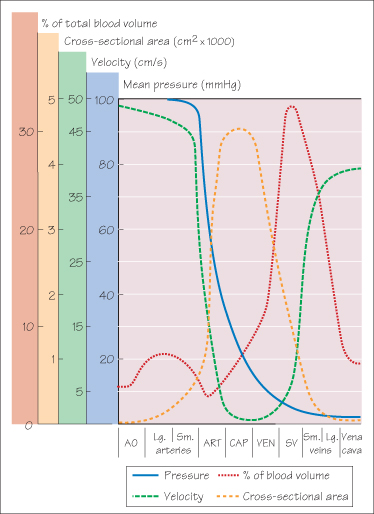
Relationships between Pressure, Resistance and Flow
Haemodynamics is the study of the relationships between pressure, resistance and the flow of blood in the cardiovascular system. Although the properties of this flow are enormously complex, they can largely be derived from simpler physical laws governing the flow of liquids through single tubes.
When a fluid is pumped through a closed system, its flow (Q) is determined by the pressure head developed by the pump (P1–P2 or ΔP), and by the resistance (R) to that flow, according to Darcy’s law (analogous to Ohm’s law):

or for the cardiovascular system as a whole:

where CO is cardiac output, MABP is mean arterial blood pressure, TPR is total peripheral resistance and CVP is central venous pressure. Because CVP is ordinarily close to zero, MABP is equal to CO × TPR.
Resistance to flow is caused by frictional forces within the fluid, and depends on the viscosity of the fluid and the dimensions of the tube, as described by Poiseuille’s law:

so that:

Here, V is the viscosity of the fluid, L is the tube length and r is the inner radius (= 1/2 the diameter) of the tube. Because flow depends on the 4th power of the tube radius in this equation, small changes in radius have a powerful effect on flow. For example, a 20% decrease in radius reduces flow by about 60%.
Stay updated, free articles. Join our Telegram channel

Full access? Get Clinical Tree


